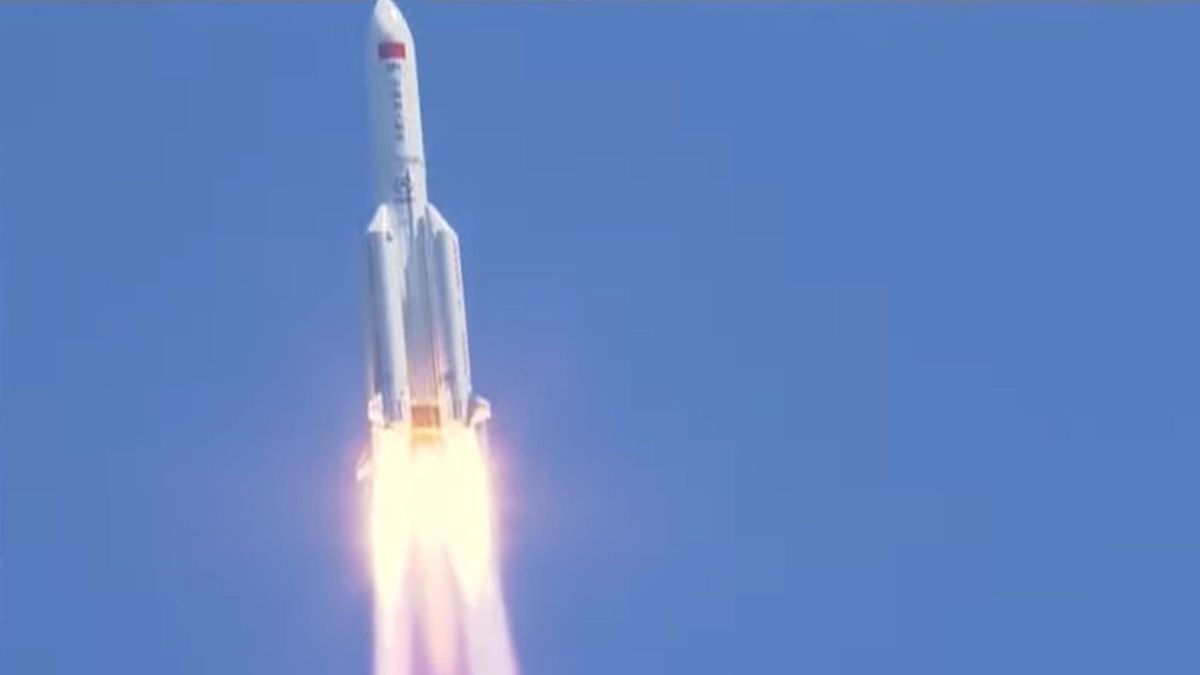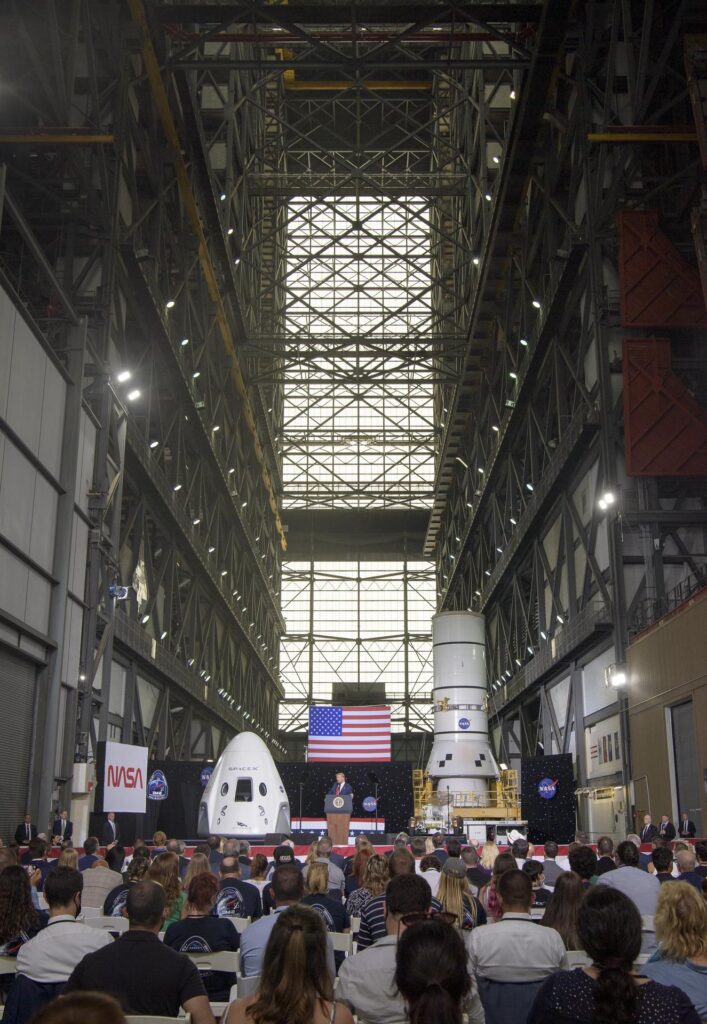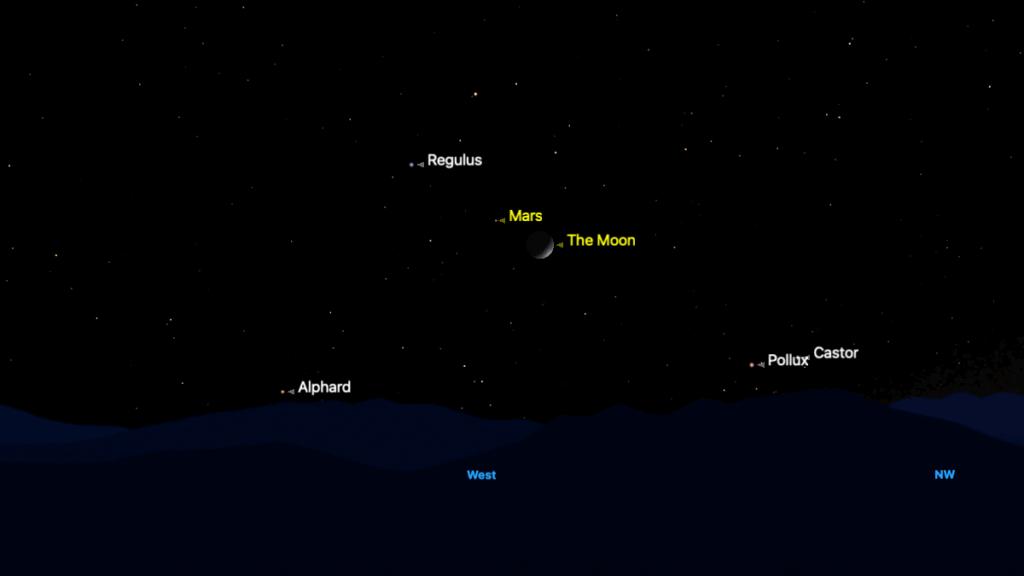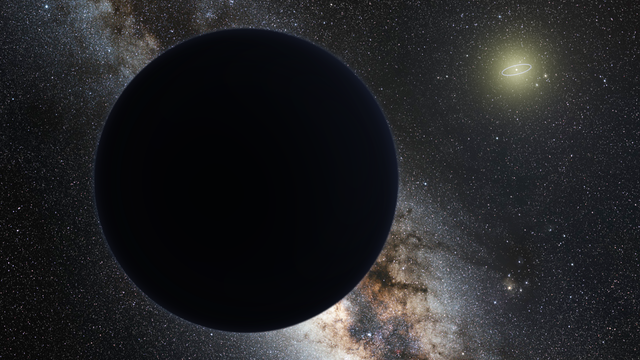
A big piece of Chinese space junk has crashed back to Earth.
The 25-ton (22.5 metric tons) core stage of a Long March 5B rocket reentered Earth’s atmosphere over the Indian Ocean this afternoon (July 30), ending its brief but controversial orbital stay.
“#USSPACECOM can confirm the People’s Republic of China (PRC) Long March 5B (CZ-5B) reentered over the Indian Ocean at approx 10:45 am MDT [12:45 p.m. EDT; 1645 GMT] on 7/30,” the U.S. Space Command announced via Twitter today (opens in new tab). “We refer you to the #PRC for further details on the reentry’s technical aspects such as potential debris dispersal + impact location.”
Related: The biggest spacecraft to fall uncontrolled from space
meteor spotted in kuching! #jalanbako 31/7/2022 pic.twitter.com/ff8b2zI2swJuly 30, 2022
The Long March 5B lifted off on July 24, carrying a new module toward China’s under-construction Tiangong space station. Unlike the core stages of most rockets, which are steered to a safe disposal shortly after launch or land softly for future reuse, the Long March 5B reached orbit along with its payload. And it stayed up — as a big, fast-moving piece of space junk — until atmospheric drag brought it down in an unpredictable and uncontrolled fashion.
Mission managers didn’t screw anything up; this end-of-life scenario is built into the Long March 5B’s design, to the consternation of exploration advocates and much of the broader spaceflight community. This disposal strategy is reckless, critics say, given that the big rocket doesn’t burn up completely upon reentry.
Suspected rocket debris at Sibu Sarawak Area pic.twitter.com/xIROJGM0PDJuly 30, 2022
Indeed, 5.5 tons to 9.9 tons (5 to 9 metric tons) of the Long March 5B likely survived all the way to the ground today, experts with The Aerospace Corporation’s Center for Orbital Reentry and Debris Studies have estimated (opens in new tab).
And it’s possible that falling rocket chunks caused some injuries or infrastructure damage today, given where the Long March 5B reentered. One observer appeared to capture the rocket’s breakup from Kuching, in the Malaysian state of Sarawak, for example, posting video of the dramatic event on Twitter (opens in new tab).
“The video from Kuching implies it was high in the atmosphere at that time — any debris would land hundreds of km further along track, near Sibu, Bintulu or even Brunei,” astrophysicist and satellite tracker Jonathan McDowell, of the Harvard-Smithsonian Center for Astrophysics, said via Twitter today (opens in new tab). It’s “unlikely but not impossible” that one or more chunks hit a population center, he added in another tweet (opens in new tab).
Chinese space officials, for their part, said (opens in new tab) the rocket body reentered at 119.0 degrees east longitude and 9.1 degrees north latitude. That location is over open ocean, just off the coast of Palawan Island, which is part of the Philippines.
We’ll have to wait a while to see exactly where the rocket debris came down. But the fact that the crash occurred at all does not reflect well on China and its spaceflight program, experts say.
“What really should have happened is, there should have been some fuel left on board for this to be a controlled reentry,” Darren McKnight, a senior technical fellow at the California-based tracking company LeoLabs, said Thursday (July 28) during a Long March 5B reentry discussion that The Aerospace Corporation livestreamed on Twitter. “That would be the responsible thing to do.”
NASA Administrator Bill Nelson voiced similar sentiments, calling out China in a statement issued today (opens in new tab) shortly after the reentry.
“The People’s Republic of China (PRC) did not share specific trajectory information as their Long March 5B rocket fell back to Earth,” Nelson said.
“All spacefaring nations should follow established best practices, and do their part to share this type of information in advance to allow reliable predictions of potential debris impact risk, especially for heavy-lift vehicles, like the Long March 5B, which carry a significant risk of loss of life and property,” he added. “Doing so is critical to the responsible use of space and to ensure the safety of people here on Earth.”
Related: China’s Long March rocket family: History and photos
Related stories:
This was the third uncontrolled fall for a Long March 5B core stage to date. About 10 days after the rocket’s debut launch, in May 2020, pieces of the rocket body rained back to Earth over West Africa, some of them apparentlyhitting the ground in Ivory Coast (opens in new tab).
The rocket’s second flight, in April 2021, lofted Tianhe, the core module of the Tiangong space station. That Long March 5B body reentered over the Arabian peninsula about a week after liftoff, dumping debris over the Indian Ocean.
The rocket will fly again soon as well: A Long March 5B is expected to launch the third and final Tiangong module this fall. There will probably be more Chinese space junk drama after that, but perhaps not for too much longer.
“I do see China slowly adopting the norms of other countries in space,” McDowell said during Thursday’s Aerospace Corporation discussion.
“And I think it’s important to remember that they were sort of a latecomer to space activities,” McDowell added. “And so they’re catching up, and I think they’re catching up in norms as well.”
Editor’s note: This story was updated at 3:30 p.m. EDT on July 30 to include Chinese officials’ statement about where the rocket body reentered.
Mike Wall is the author of “Out There (opens in new tab)” (Grand Central Publishing, 2018; illustrated by Karl Tate), a book about the search for alien life. Follow him on Twitter @michaeldwall (opens in new tab). Follow us on Twitter @Spacedotcom (opens in new tab) or on Facebook (opens in new tab).



